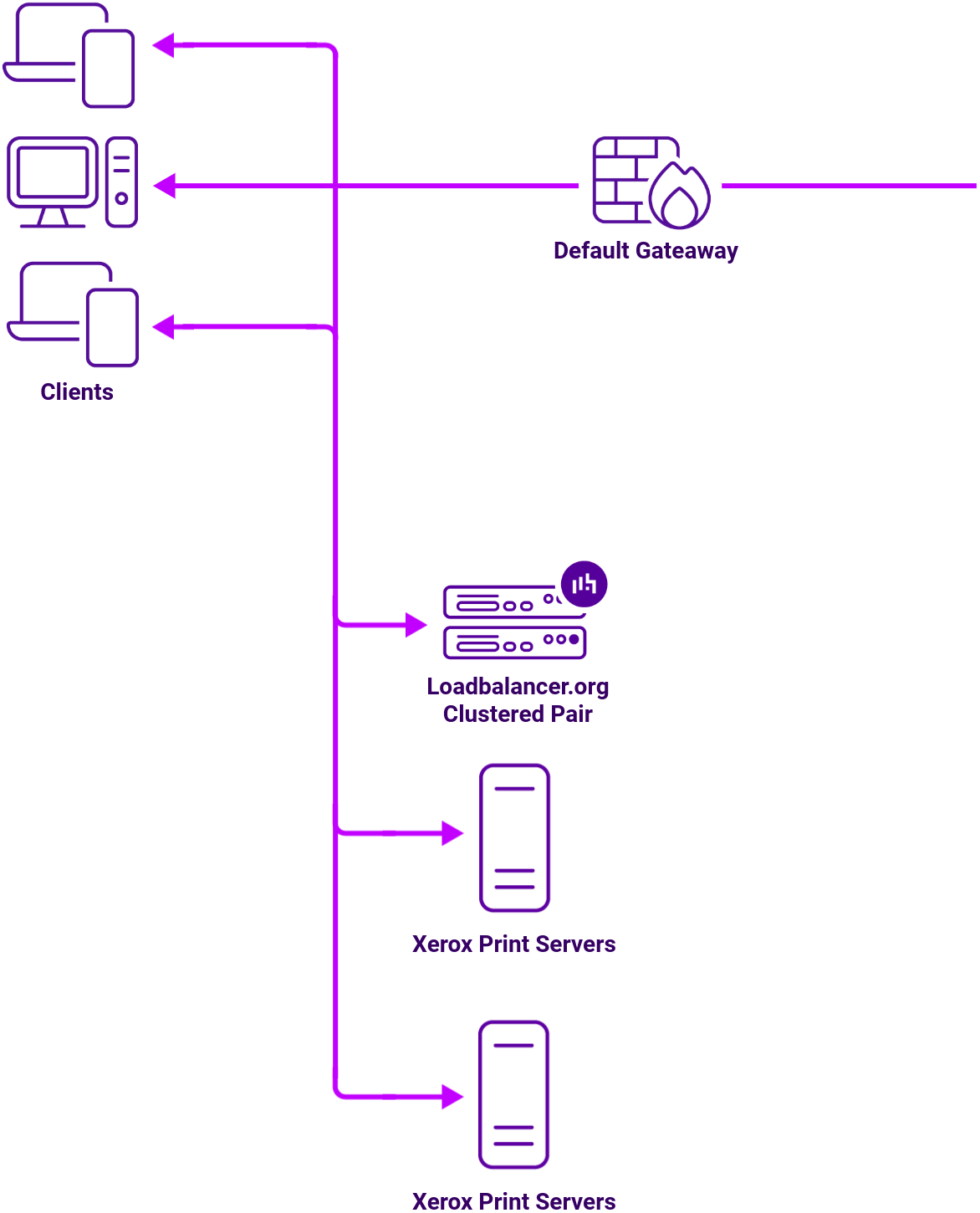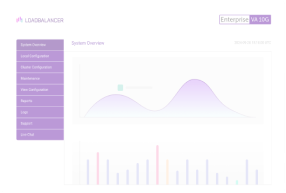Benefits of load balancing Xerox print servers
Load balancing Xerox print servers provides the following main benefits:
- High Availability (HA): Load balancing ensures that the printing system remains operational even if a single server fails. This is often referred to as Failover. If one print server goes offline (e.g., for maintenance, or due to a hardware or software failure), the load balancer automatically redirects all incoming print jobs to the remaining active servers. This eliminates the print server as a single point of failure, ensuring that users can continue to print critical documents without interruption.
- Improved performance and scalability: By distributing print jobs across multiple servers, load balancing prevents any single server from becoming overwhelmed. Print jobs are spread out, minimizing server overload and preventing slow performance or crashes that can occur during periods of high demand. With the workload evenly distributed, print jobs are processed faster, leading to reduced wait times for users. As your organization’s printing demands grow, you can easily add more print servers to the load-balancing cluster to handle the increased load without disrupting service.
- Optimized resource utilization: Load balancing intelligently manages the allocation of print jobs to make the most efficient use of all available server and printer resources. It ensures that all available print servers are utilized, preventing the situation where one server is running at max capacity while others are idle.
About Xerox print servers
Xerox print servers provide a flexible and high performance front-end for printing hardware, such as printers and presses. From a common workflow, users have the power to manage print jobs, queues, and resources across varied printer environments. Colour management, secure printing, and more can be handled from a drag-and-drop graphical interface. Third party print management solutions can be load balanced when used with Xerox print servers.
Why Loadbalancer.org for Xerox print servers?
Loadbalancer’s intuitive Enterprise Application Delivery Controller (ADC) is designed to save time and money with a clever, not complex, WebUI.
Easily configure, deploy, manage, and maintain our Enterprise load balancer, reducing complexity and the risk of human error. For a difference you can see in just minutes.
And with WAF and GSLB included straight out-of-the-box, there’s no hidden costs, so the prices you see on our website are fully transparent.
More on what’s possible with Loadbalancer.org.
How to load balance Xerox print servers
The load balancer can be deployed in 4 fundamental ways: Layer 4 DR mode, Layer 4 NAT mode, Layer 4 SNAT mode, and Layer 7 Reverse Proxy (Layer 7 SNAT mode).
For Xerox print servers, Layer 4 DR Mode load balancing is recommended. This is a very high-performance solution that requires little change to your existing infrastructure.
It is also possible to load balance a Xerox print server deployment using Layer 7 Reverse Proxy. This mode might be preferable if making changes to the real print servers is not possible, although some Windows Registry keys need to be added. Due to the increased amount of information at Layer 7, performance is not as fast as at Layer 4. Also note that load balanced connections at Layer 7 are not source IP transparent, which is not usually an issue when load balancing print servers but should still be considered.
Load balancing deployment concept

About Layer 4 DR mode load balancing
One-arm direct routing (DR) mode is a very high performance solution that requires little change to your existing infrastructure.

DR mode works by changing the destination MAC address of the incoming packet to match the selected Real Server on the fly which is very fast.
When the packet reaches the Real Server it expects the Real Server to own the Virtual Services IP address (VIP). This means that you need to ensure that the Real Server (and the load balanced application) respond to both the Real Server’s own IP address and the VIP.
The Real Servers should not respond to ARP requests for the VIP. Only the load balancer should do this. Configuring the Real Servers in this way is referred to as Solving the ARP problem.
On average, DR mode is 8 times quicker than NAT for HTTP, 50 times quicker for Terminal Services and much, much faster for streaming media or FTP.
The load balancer must have an Interface in the same subnet as the Real Servers to ensure Layer 2 connectivity required for DR mode to work.
The VIP can be brought up on the same subnet as the Real Servers, or on a different subnet provided that the load balancer has an interface in that subnet.
Port translation is not possible with DR mode, e.g. VIP:80 → RIP:8080 is not supported. DR mode is transparent, i.e. the Real Server will see the source IP address of the client.


















